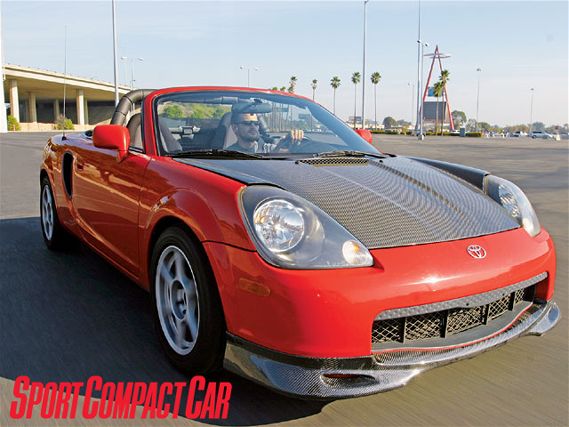 | Project Toyota MR2 Spyder - Part 5
| Project Toyota MR2 Spyder - Part 5
Lotus couldn't provide a 2006 Elise when we last went to the track.So Project MR2 Spyder is still waiting for the showdown. In the meantime, we're making the final preparations.
The stock MR2 already has a 300-pound weight disadvantage. Our car, with the aftermarket suspension, roll bar, bracing, and turbo hardware will add at least another 60 pounds. With cars this light, that's a huge difference. We're hoping Project MR2's newfound power, grip and track width will help it keep up with the Elise, at least.
To make it fair, we're throwing on a set of Yokohama A048 R-compound tires. Yokohama makes an exclusive tire for the Elise with this same name and design, but using a different internal construction for the rears: nylon instead of polyester and a spiral-wound construction in place of the standard radial winding. What this means, according to Yokohama and Lotus engineers, is that the A048LTS (for Lotus) has better turn-in response and mid-corner feedback than the standard tires. The LTS tires also use a more durable compound, more like the medium/hard compound that Yokohama offers. We chose the softer/medium. The Elise also uses a staggered set-up with 175/55R16 tires in front and 225/45R17 in back, while we'll be using 205/50R15s throughout, which will hopefully give us some added front grip to compensate for the extra weight. But what do we know about chassis dynamics compared to a bunch of Limey chassis engineers?
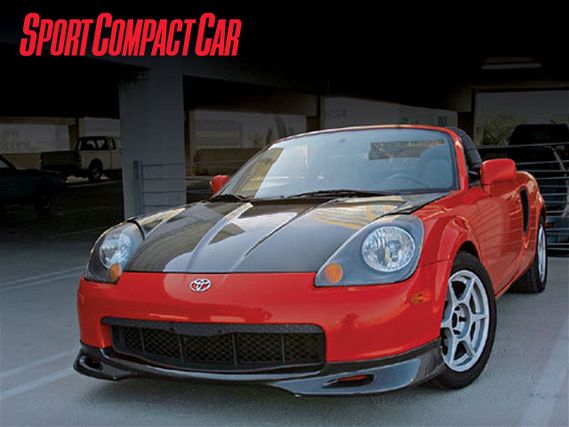 | Project Toyota MR2 Spyder - Part 5
| Project Toyota MR2 Spyder - Part 5
Because of the cost and how fast we go through such soft tires, we don't normally use Yokohama R-compounds for our project cars. But our experience of the older A032 and newer A048 has been positive. In addition to the outstanding dry grip we've come to expect, the unconventional tread pattern (with almost solid shoulder tread blocks) maintains a huge amount of lateral grip with a predictable breakaway point. The A048 also copes quite well with a mild amount of moisture on the track.
On the street, the cornering speeds we can reach on a smooth sweeper are just mind-numbing. Even on old tires, this roadster has already out-cornered our other project cars. With the new rubber, you're often left with the chills thinking about the maneuver you just got away with. We'll test just how much of an advantage in grip we have when the Elise/MR2 track and skidpad session finally materializes.
BrakesWhen the MR2 Spyder first came out, most magazines lauded it for its phenomenal braking ability, even if it was only from 60mph. A car this light doesn't need much in terms of hardware to make it stop, nor does it have much kinetic energy to convert into brake heat as it decelerates. Long ago, we installed TRD's performance pads, but years of abuse and neglect had unevenly worn the rear pads down to the backing plate.
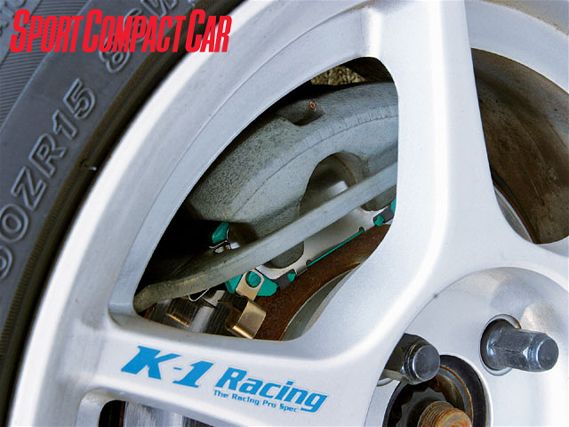 | Project Toyota MR2 Spyder - Part 5
| Project Toyota MR2 Spyder - Part 5
As good as the old TRD pads were, we decided to seek out a more track-oriented pad with a wider thermal envelope of operation. Call us suckers for good advertising, but we ended up looking to Project Mu on account of their race experience with the MR2 in various Japanese series. Project Mu's Titan Kai street/race pad would have been the best fit, but the line was being phased out for the new Level900 series pad that, according to Project Mu, has better street characteristics and track longevity. Great, we'll take 'em. Problem was, they were so new, it would have taken months to get a set from Japan. Our need for brakes and desire to get behind the wheel couldn't make this fly, so we settled for the company's Type-NS street pad.
It's less temperature-tolerant than we were looking for, but the Type-NS has good modulation, a mild initial bite and no noise, something few of our cars can brag about. Compared to the original TRD pads, which bite harder and with a stiffer feel, the Type-NS pads feel more street-oriented. The good mid-travel modulation feel also makes balancing heel-toe downshifts a simple matter. Considering this car sees more street time than track time (where fade is the issue), we're pretty content. We don't have new braking numbers with the pads and tires. We'll let you know how they hold up after five hot laps.
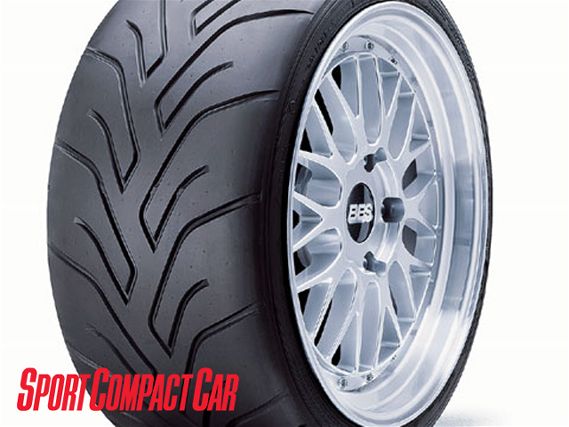 | Project Toyota MR2 Spyder - Part 5
| Project Toyota MR2 Spyder - Part 5
A New LookFor all our judging of people with carbon fiber layered fiberglass hoods and fenders, we should be ashamed that we've now joined the dark side. But we're not. And it's not because we're trying to put the MR2 on a diet before the fight, since the Seibon carbon fiber hood and chin spoiler together weigh about the same as the stock hood.
The real reason is that we (well, I) unintentionally destroyed the hood, adding to the long list of other body panels we've had to replace on this project. In my search for places to store test gear one evening, I drove off while forgetting to slam the hood shut. At 20mph, aerodynamics took hold and flung the hood open. I was lucky to come away with an intact windshield.
After calling around for parts and prices, we decided that having Seibon graciously donate a composite hood was a hell of a lot cheaper than buying parts from Toyota and having them painted. Seibon also threw in the chin spoiler. While we can't vouch for the aerodynamic or weight advantages of the new parts, they are quite good as after-market body parts go in terms of finish. The hood, however, is a pretty bad fit.
 | Project Toyota MR2 Spyder - Part 5
| Project Toyota MR2 Spyder - Part 5
AlignmentOur final task was a track-friendly alignment, courtesy of Shoreline Motoring in Huntington Beach, California. While the car already flings around corners with ease, it still has the steering feel of a mid-engined car (unsurprisingly).
At turn-in, the car does not respond as sprightly as the minimal resistance in the wheel indicates. As the suspension loads up at turn-in, the steering suddenly becomes heavy. Although this is typical of most street-going mid-engine cars, we wanted just a little more agility. Shoreline was able to dial in one-sixteenth of an inch of toe-out in front and slightly less in the rear. Camber was pushed to negative two degrees in front by using smaller bolts in the stock adjustment slots, while the rear camber was taken to negative 1.5 degrees.
It's not much, but the turn-in and mid-corner feel has changed dramatically. So much so that we'd be afraid if the car had a limited-slip diff, since it would spin if the throttle were accidentally bumped mid-bend.
Next time, when we finally face the Elise, we'll see if all our enthusiasm was just a joke.
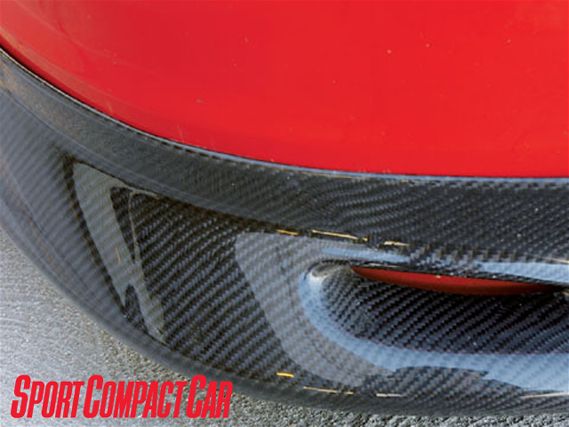 | Project Toyota MR2 Spyder - Part 5
| Project Toyota MR2 Spyder - Part 5
Previous Installments
March 2002
Part1: Intro, battery, suspension, testing
August 2002
Part 2: Exhaust, shifter, safety
May 2003
Part 3: Waiting for the go
October 2006
Part 4: Aged to perfection
